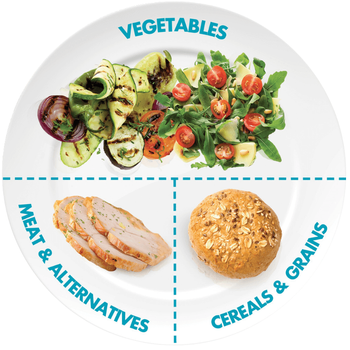Healthy cooking At Home

Swapping junk food for home-cooked is our number one tip for eating better. Cooking at home means having more control over what’s going into our food - this means less sugar, salt and fat and more fruit and veg.
Tips for cooking healthy meals at home
1. Meal planning
Planning what you and your family will eat for the week can make it easier to stick to your healthy eating goals when life gets busy. It also means less food waste - which is good for your wallet and the environment!
2. Grill, stir-fry or steam
Use healthy cooking methods like boiling, braising, grilling, microwaving, poaching, steaming and stir-frying. When baking, barbecuing or roasting limit the amount of oil used. Olive or canola oil sprays are useful for controlling the amount of fat that you add during cooking.
3. Add extra vegies
One of the easiest ways to make your dishes healthier is to add extra vegetables! Here’s how:
- Make half your meal vegetables.
- Add extra vegetables and tinned beans and lentils to pasta dishes, curries, stews, casseroles, stir-fries and soups.
- Add grated vegetables to muffin and cake mixtures.
- Use half the amount of mince and replace with tinned lentils and beans or finely chopped carrot, celery and zucchini.
- Include salad on the side of your meals.
- Add ribbons of zucchini, carrot or pumpkin to your spaghetti.

4. Healthy swaps
Making a few small changes can make your favourite dishes healthier. Check out our guide!
| Swap this | For this | |
|---|---|---|
| Meat and alternatives |
Processed meats like bacon, ham or salami |
Lean meats like chicken or turkey breast |
Tuna in oil |
Tuna in springwater |
|
Beef mince |
Lean beef mince, chicken or kangaroo mince |
|
Sausages |
Lean sausages, chicken or kangaroo sausages, home-made rissoles |
|
Red meat |
Aim for no more than 3-4 portions of red meat each week. Fish, seafood, chicken, eggs, nuts and seeds and beans and lentils can be used instead. |
|
| Dairy |
Cream |
Reduced-fat natural yoghurt or reduced-fat evaporated milk (in cooking) |
Sour cream |
Reduced fat natural or Greek yoghurt |
|
Cheese |
Reduced-fat cheese or small amount of a strong tasting cheese e.g. parmesan |
|
| Breads and cereals |
White bread, wraps or crumpets |
Multigrain or wholemeal varieties |
White pasta |
Wholemeal, high fibre or legume pasta |
|
Rice |
Brown rice or a low GI rice e.g. basmati, or try cauliflower rice! |
|
Corn chips |
Slice corn tortillas into triangles and bake for 5-10 minutes |
|
| Fruits and vegetables |
Canned fruit in syrup |
Canned fruit in juice |
Canned vegetables and beans |
Salt-reduced varieties |
|
Coconut cream |
Reduced-fat coconut milk |
|
| Baking |
Sugar |
Reduce to as little as 1/4 cup of sugar for every 1 cup of flourAdd cinnamon, allspice, vanilla essence and fruit for extra flavour |
Butter |
Margarine or olive/canola/safflower oil
|
|
Shortcrust or puff pastry |
Filo pastry brushed with low-fat milk or a light spray of olive or canola oil between sheets
|
|
White flour |
Wholemeal flour or use a mix of white and wholemeal |
|
Icing, edible decorations or cream |
Fresh fruit |
|
Ice cream |
Freeze bananas and blend in a high powered mixer |
|
| Flavourings |
Salt |
Herbs, spices, lemon, chilli, ginger, garlicDon’t add salt when cooking pasta or rice |
Stock or stock cubes |
Reduced-salt commercial stock, home-made stock (no added salt) or water with herbs and spices |
|
Sauces |
No-added-salt or reduced-salt versions, or swap for fresh herbs and lemon |
|
Salad dressings |
Make your own using olive oil and vinegar, tahini or low-fat yoghurt |
|